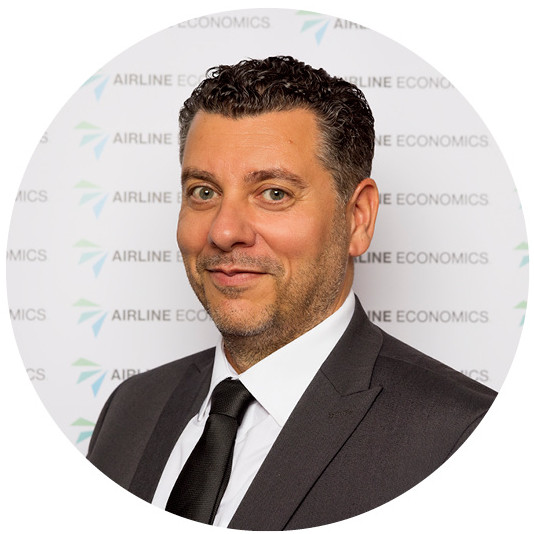MTU Aero Engines closed the financial year 2015 with new records. Revenues reached a new high of €4,435.3 million (2014: €3,913.9 million) while the group’s operating profit climbed to €440.3 million (2014: €382.7 million), an increase of 15%. Earnings after tax beat the previous all-time record set in 2014, rising by 21% from €253.3 million to €306.9 million.
“We have thus significantly surpassed our earnings forecasts, in both cases by more than €10 million, even after having revised them upward in the summer. Revenues also grew to a new record high which, owing to postponed deliveries of certain series-production engines – among them the PW1100G-JM for the A320neo – was on a level with the original forecast,” said Reiner Winkler, CEO of MTU Aero Engines AG, speaking at the annual press conference on Tuesday, February 16, 2016, when the provisional annual financial statements were presented. MTU had aimed to generate revenues of around €4,600 million in 2015, and had expected adjusted EBIT and adjusted net income to reach approximately €430 million and €295 million respectively. Winkler is optimistic about the future: “The market indicators are positive all round, allowing us to set the bar for 2016 another notch higher.”
MTU says that it stands to benefit from the aircraft industry’s present high order backlog by virtue of its partnership in engine programs for these types of aircraft. Moreover, the engines in MTU’s maintenance portfolio are responsible for an above-average share of growth in the MRO market. “This means that we can expect to see continuing strong demand, especially for geared turbofan engines,” said Winkler. “We are extremely well placed in the maintenance sector, not only as an independent service provider but also as a member of the OEMs’ MRO networks and as a partner to airlines. Our revenue forecast for 2016 reflects this situation.” MTU expects its revenues from commercial series-production engines, expressed in U.S. dollars, to increase by a mid-single-digit percentage. Spare parts sales, also expressed in U.S. dollars, are expected to increase by a low-to-mid-single-digit percentage. Stable revenues are expected from MTU’s military engine business. A high-single-digit growth rate is expected for revenues in the commercial maintenance business. Altogether, group revenues in 2016 are estimated to rise to between €4.6 billion and €4.7 billion (2015: €4,435.3 million), taking exchange rate effects into account. MTU expects to achieve a stable EBIT margin of around 10% (2015 adjusted EBIT: €440.3 million) and an earnings after tax growth in line with adjusted EBIT (2015 adjusted net income: €306.9 million).
The commercial maintenance business achieved the highest growth rate in terms of revenues in 2015, increasing by 22% to €1,580.6 (2014: €1,298.9 million). The key revenue driver was the V2500 engine that powers the A320, followed by the CF6-80 deployed by Airbus and Boeing in their medium- and long-haul widebody airliners.
Revenues in the commercial engine business grew by 14% to €2,414.0 million (2014: €2,116.8 million). Here, the V2500, the GP7000 for the Airbus A380 and the GEnx for Boeing’s 787 Dreamliner and 747-8 were the highest contributors.
In the military engine business, revenues decreased from €531.5 million to €483.1 million. The main source of these revenues was the EJ200 Eurofighter engine.
MTU’s order backlog grew by 12% to €12,493.7 million in 2015 (2014: €11,176.5 million), which represents a production workload of almost three years. “Our order backlog in the OEM segment rose to a new record high of around €6.8 billion,” added Winkler. The majority of these orders relate to the V2500 and to the PW1000G family of geared turbofan engines, above all the PW1100G-JM for the A320neo.
In 2015, MTU saw a significant leap in earnings from its commercial maintenance business, where adjusted EBIT increased by 33% to €155.2 million (2014: €116.3 million). “The positive factors leading to this result include the favorable exchange rate of the U.S. dollar and the strong capacity utilization of all MRO facilities, which logged shop visits with high added value,” explained Michael Schreyögg, Chief Program Officer of MTU Aero Engines. The EBIT margin for the MRO segment increased by 0.8 percentage points to 9.8%.
In the OEM segment, adjusted EBIT increased by 7% in 2015 to €285.0 million (2014: €266.2 million). Due to changes in the product mix, the EBIT margin decreased from 10.1% to 9.8%.
MTU continues to stand by its established dividend policy. “It is natural that we should offer investors an appropriate share of the record earnings we achieved in 2015,” said Winkler. The company will announce the amount of the dividend to be proposed to the Annual General Meeting, which takes place on April 14, 2016, after the Supervisory Board has passed the corresponding resolution at its meeting on March 1. MTU distributed a dividend of €1.45 per share for 2014.
In 2015, MTU’s research and development activities were mainly concentrated on the geared turbofan programs and on the GE9X engine for the Boeing 777X. At €210.0 million, R&D expenditure was 8% higher than in the previous year (2014: €195.3 million). Because the development costs for new programs are capitalized as intangible assets, the amount of company-funded R&D expenditure recognized in the income statement decreased from €75.7 million to €66.5 million. “In 2016, we will continue to focus our R&D activities on making further progress in geared turbofan technology. This work has two purposes: firstly to provide support to the various GTF programs as they approach commercial maturity, and secondly to contribute to the future evolution of these engines, and hence the future of MTU, as part of our technology agenda,” said Chief Operating Officer Dr. Rainer Martens.
MTU’s free cash flow increased in 2015 by 70% to €72.0 million (2014: €42.5 million). Winkler: “This confirms our forecast of an amount in the upper double-digit millions.”
In 2015, MTU boosted its capital expenditure on property, plant and equipment by 28% to €129.9 million (2014: €101.5 million). “This capital was used to purchase new plant and machinery to equip our manufacturing facilities in preparation for the ramp-up to series production of the geared turbofan programs, and to build up capacity for the maintenance of geared turbofan engines”, said Martens.

